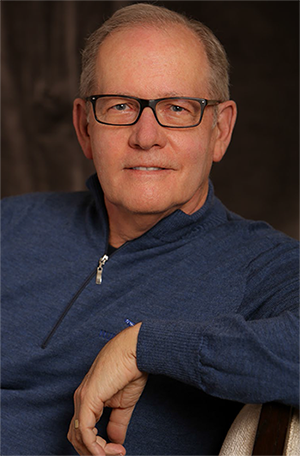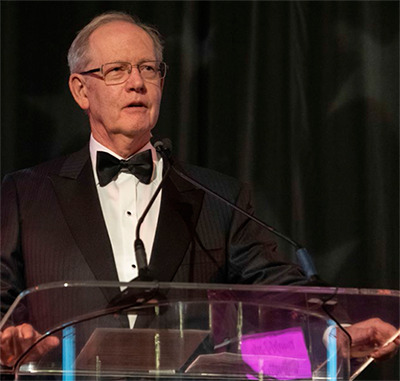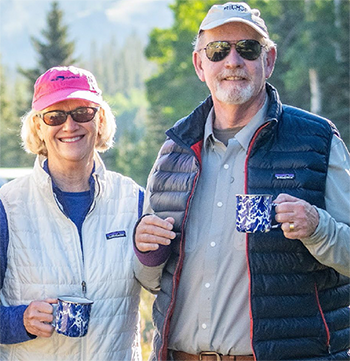Download PDF
On Jan. 31, David W. Parke II, MD, retires as CEO of the Academy, wrapping up an almost 13-year journey that has advanced the Academy’s mission of serving as an advocate for patients and the public, leading ophthalmic education, and advancing the profession. For Dr. Parke, his tenure as CEO has been challenging and rewarding as he helped guide the Academy through the continually changing educational, regulatory, and clinical landscape. In the Q&A below, Dr. Parke looks back at some of the high points during his time at the Academy’s helm and shares insights that he has gained.
EyeNet: Before taking the role of Academy CEO, you had been involved with the Academy for 20 years and likely had a sense of what to expect in the position. Was there anything about the role of CEO that surprised you?
As a volunteer, you see specific programs or divisions and generally work with a handful of staff. As a Board member and then as elected President you see a much wider scope and more of the staff. As CEO, you realize very rapidly that you’ve still only seen the tip of the iceberg. As CEO you confront, on a daily basis, issues of advocacy, policy, communications, legal, finance and audit, IT, facilities, and on and on. The breadth of the issues is initially astonishing.
 |
|
LOOKING BACK. “I certainly didn’t see my career developing as it did—but I wouldn’t change a thing,” said Dr. Parke.
|
EyeNet: What do you see as the key accomplishments during your time as Academy CEO?
As I look back on the last nearly 13 years, I’m proud of the fact that the Academy was innovative, took some risks, and achieved many new objectives. Probably the first that comes to mind is helping to lead the profession and the organization through the challenges of COVID-19. I’ve heard from many ophthalmologists that Academy communications and website resources were essential to their professional survival. Another is the IRIS Registry. It is still evolving but has already added immeasurably to the science of ophthalmology and to giving members resources to look at outcomes and quality—and, through MIPS, it has meant over $1 billion in penalty avoidance and bonuses. We did this better than any other specialty. There are many other accomplishments, from rebranding, to the Minority Ophthalmology Mentoring program, to the Museum of the Eye. And all these are successes of the Academy, not just the Academy’s CEO.
 |
|
AT THE HELM. At the podium or in his office, Dr. Parke led the Academy through 12+ years of change.
|
EyeNet: What was the most challenging aspect of the job?
Honestly, it’s probably the communications piece. I spent 25 years taking care of patients, running a practice, and helping to train residents and fellows. I really, really loved it. And I chose to do that because I love interacting with my peers and with the public.
At the Academy, I wanted to be visible and accessible to our members. During and after complex or controversial decisions, I will sometimes communicate with hundreds of members. I learn from them, and I hope that I enable them to better understand the Academy’s positions and actions. Given the broad spectrum of priorities, experiences, and politics among our members, that process is rewarding but occasionally it is also challenging.
EyeNet: What will you miss most about the day-to-day business of the Academy?
The energy of dealing with unanticipated, complex, and impactful issues literally every day.
EyeNet: Briefly, what lies ahead for ophthalmology and the Academy in the next five years or so?
There is no “brief” answer to that question. And I’ve given a lot of thought to it. There are issues of access to care, of professionalism, of corporatization and consolidation, of cultural change within our profession, of data analytics, AI, and big data, of continually fostering professional innovation, and many others. Probably the most immediate to me is solving the dilemma of appropriate physician payment against the backdrop of rising societal health care costs. On one hand, global health care cost increases are unsustainable. But on the other, physicians cannot continue to see payments per service drop year after year in a fiscal environment of increasing practice costs. That too is unsustainable.
EyeNet: What words of advice do you have for Dr. McLeod?
I wish I were his age. I’d love to be taking this job on again for the first time. I’ve loved it. I hope he does too.
EyeNet: What would you say has been the secret to your success?
I’d say that the secret has been listening to the incredibly bright people around me—both ophthalmologists and Academy staff—and empowering them to turn great ideas into new initiatives. And trying to foster an environment in which everyone is encouraged to contribute, but where ideas are also tested and refined against the mission of the organization. Is it good for patients, and is it good for the profession?
EyeNet: You spent 17 years heading Dean McGee, 13 years heading the Academy. Do you have plans for the next chapter of your career?
I’m a firm believer in leadership transition, in new blood. I’ve been preparing for this transition for about four years. But I’ve still got plenty of energy and am not simply going to stay home supervising my Labrador retriever.
The Academy fortunately has a few things they’d like me to do. And I will continue to work with Verana Health as Board Chair trying to further develop the promise of the Academy’s IRIS clinical data registry.
EyeNet: How have you balanced home and work demands?
Probably not as well as I should. I’ve traveled a lot—sometimes putting about 200,000 miles on United in a year. I haven’t said “no” as often as I might have. But I’m blessed with a fantastic physician spouse who understands the requirements of the Academy job and who has been an active partner in fulfilling them.
 |
|
TIME OFF. Dr. Parke relaxing with his wife, Julie.
|
EyeNet: What advice would you give young ophthalmologists to succeed in ophthalmology?
It’s important to understand that there is not a single path to success. A lot depends on serendipity. If you really like exclusively seeing patients day after day, embrace it. Fantastic, ethical patient-centered care is the touchstone of the medical profession, and you should be proud of it.
If along the way, something else—scientific innovation, teaching, advocacy, or organizational leadership—becomes a strong interest, then do it. Give it a sustained effort. See what happens next. Follow your interests. Very few of us can architect with certainty a 30- or 40-year career. I certainly didn’t see my career developing as it did—but I wouldn’t change a thing.
Selected Highlights From the Parke Years
2009
H. Dunbar Hoskins Jr., M.D. Center for Quality Eye Care is founded.
2010
Position of Medical Director of Governmental Affairs is created.
EyeWiki debuts.
2011
EyeSmart launches.
International Advisors become International Trustees-at-Large.
2012
Redmond Center for Professionalism and Ethics is established.
Ophthalmic Knowledge Assessment Program (OKAP) goes international.
2013
The ONE Network v 2.0 comes online.
Munnerlyn Laser Surgery Education Center launches.
2014
IRIS Registry is unveiled.
Ocular Oncology and Pathology Subspecialty Day is introduced.
2015
Academy Division of Quality and Data Science is established.
AAO2AAO first joint symposium takes place.
Knights Templar Eye Foundation Pediatric Ophthalmology Education Center launches.
2016
Academy unveils new mission statement, with new brand strategy and identity.
The Minority Ophthalmology Mentoring program launches.
Dr. Parke serves as President, Council of Medical Specialty Societies.
2017
Ophthalmology Retina debuts.
David E.I. Pyott Glaucoma Education Center is established.
2018
Ophthalmology Glaucoma begins publication.
Academy helps establish Verana Health to support the IRIS Registry.
BCSC Self-Assessment Program is created.
2019
EyeSmart.org breaks 3 million monthly page views.
AAO Ophthalmic Education App goes live.
Initiative to address myopia worldwide starts up.
2020
Artificial Intelligence committee structure is established.
AAO.org coronavirus website was visited over 1 million times in April.
Academy holds first-ever virtual annual meeting.
Inaugural Eyecelerator meeting takes place.
2021
Truhlsen-Marmor Museum of the Eye opens its doors.
Ophthalmology Science launches.
Task Force on Disparities in Eye Care is created.
|